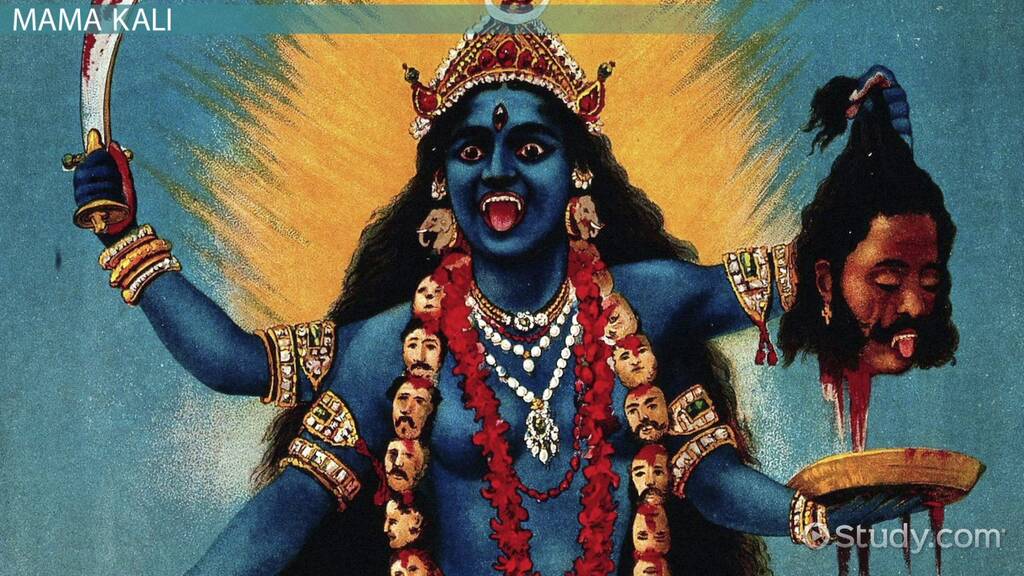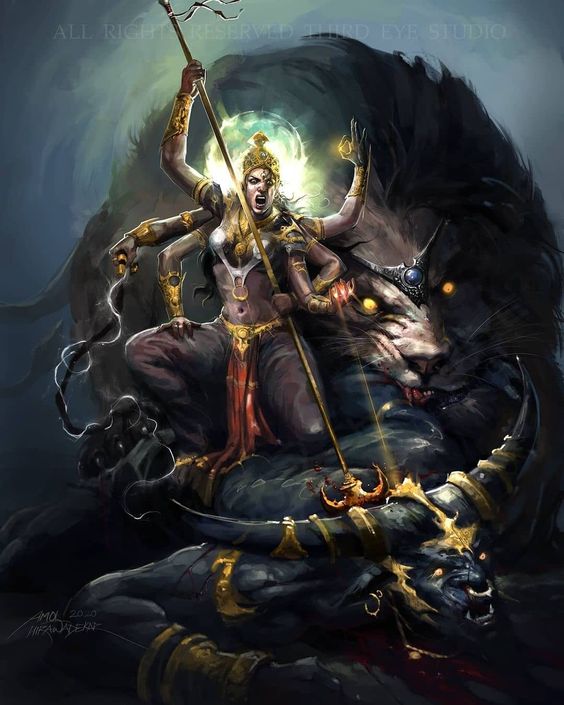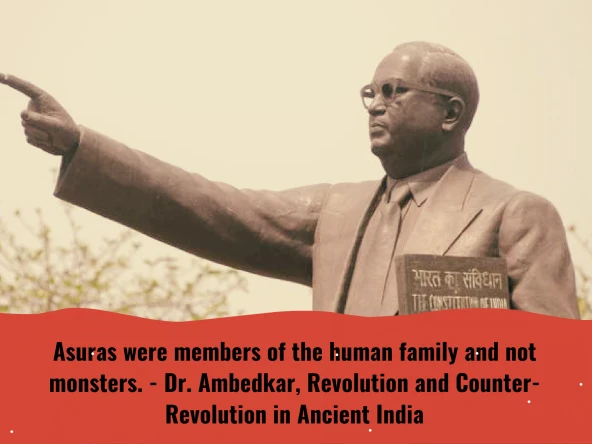Durga Puja is celebrated across India with grandeur, hailed as a festival of empowerment, devotion, and the triumph of good over evil. However, for Dalit and Adivasi communities, this celebration is a stark reminder of the historical and ongoing marginalization they continue to face. The festival, which glorifies the killing of Mahishasura, an indigenous leader revered by many, is not just a religious event—it is a powerful symbol of caste oppression that erases the histories and cultures of marginalized communities. Until we stop celebrating the defeat and killing of indigenous rulers, true liberation for the oppressed remains a distant dream.
A Celebration of Caste-Based Violence
The story of Durga slaying Mahishasura is central to the celebration of Durga Puja. In mainstream Hindu mythology, Mahishasura is depicted as a demon, and his defeat is seen as a triumph of good over evil. However, for many Adivasi and Dalit communities, Mahishasura is not a demon but a heroic figure—a king who resisted Aryan and Brahminical domination(Forward Press). The celebration of his death during Durga Puja is not merely a religious act, but a symbolic reinforcement of caste hierarchies that have oppressed indigenous people for centuries.
By celebrating Mahishasura’s defeat, the festival glorifies the violence inflicted on marginalized communities, turning a brutal act of suppression into a spectacle of joy. For Dalit and Adivasi communities, this is not a celebration of victory, but a reminder of their ancestors’ subjugation and the continued erasure of their cultural and historical narratives(Forward Press)(Forward Press).

The False Promise of Feminist Empowerment
Durga is often hailed as a feminist icon, celebrated for her strength, courage, and power. However, this portrayal of empowerment is deeply exclusionary. Durga’s triumph over Mahishasura—an indigenous, lower-caste leader—reinforces caste hierarchies while masquerading as a feminist narrative. Upper-caste women may see Durga as a symbol of their empowerment, but for Dalit and Adivasi women, this version of feminism is hollow and exclusionary. It celebrates the success of an upper-caste woman at the expense of marginalized communities, ignoring the intersectional struggles of Dalit and Adivasi women, who face both caste and gender-based violence(Forward Press)(Forward Press).
True feminist empowerment cannot be achieved while celebrating the defeat and erasure of indigenous people. As long as festivals like Durga Puja glorify the killing of a revered indigenous leader, the feminism it claims to represent will remain incomplete and complicit in the oppression of marginalized women.
Erasing Indigenous Histories
Mahishasura’s portrayal as a demon is part of a broader pattern of cultural appropriation and historical erasure. Indigenous communities, including Adivasis and Dalits, have their own stories and traditions that honor figures like Mahishasura as heroes and ancestors. Yet, these narratives are consistently overwritten by dominant caste groups, transforming indigenous leaders into villains to justify Brahminical supremacy. This cultural appropriation strips away the dignity and identity of marginalized communities, further entrenching their social and economic oppression(Forward Press).
Until indigenous histories are reclaimed and honored, and until festivals like Durga Puja stop celebrating the violent erasure of these histories, marginalized communities will continue to be denied their rightful place in society.
The Role of Colonialism in Reinforcing Caste Supremacy
Colonialism played a significant role in transforming Durga Puja into the grand public spectacle it is today. After the Battle of Plassey in 1757, British officials and local zamindars used the festival to consolidate power and legitimize their rule over Bengal. What began as a private ritual for wealthy zamindar families became a public display of Brahminical dominance, celebrated by the elite and endorsed by the colonial state. This alliance between colonial rulers and the upper-caste elites further marginalized Dalit and Adivasi communities, entrenching the caste-based hierarchies that continue to define Indian society today(A-Case-Study-of-Durgapu…).

The Path to Liberation
If we are to work toward true liberation for marginalized communities, we must first confront the uncomfortable truths embedded in our cultural celebrations. The glorification of Mahishasura’s death during Durga Puja perpetuates a cycle of caste violence that continues to oppress Dalit and Adivasi people. Festivals that celebrate the killing of indigenous leaders cannot coexist with the pursuit of equality and justice.
Liberation for marginalized communities will only be possible when we stop celebrating the violent suppression of their histories and cultures. This requires not only a rethinking of our festivals and traditions but also an acknowledgment of the systemic violence that has been—and continues to be—inflicted upon Dalit and Adivasi communities. Only then can we begin to dismantle the structures of caste oppression and move toward a more inclusive and just society.
For further reading on the historical significance of the Asuras and their representation in Indian mythology, visit this article – Forward Press
Durga Puja, while celebrated by many as a festival of empowerment, reveals itself as a deeply casteist and exclusionary event when viewed through the lens of marginalized communities. As long as we continue to glorify the killing of indigenous leaders like Mahishasura, the promise of liberation for Dalits and Adivasis will remain unfulfilled. It is time for a critical reflection on the narratives we celebrate and the histories we erase. Only then can we hope to achieve true equality and justice for all.

